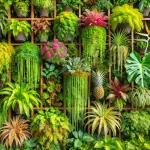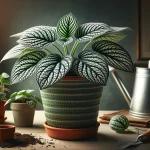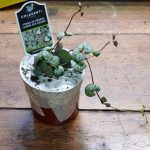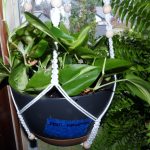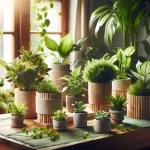This post may contain affiliate links. If you buy something from one of our links we may earn a commission. Thanks
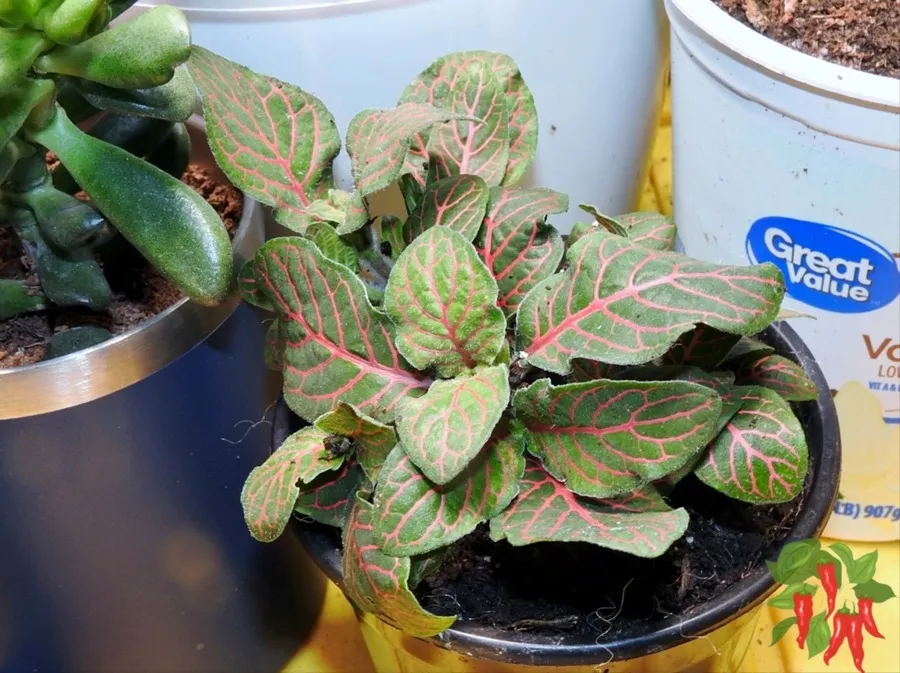
Learning How To Care For Red Fittonia Nerve Plant is easier than you think and honestly, kind of fun.
This plant may be a little dramatic when it’s thirsty, but once you get the hang of its needs, it becomes one of the most rewarding houseplants to grow.
With its vibrant red veins and love for humidity, it’s a real showstopper that thrives with just a bit of attention.
Red Fittonia Nerve Plant Care Key Takeaways
- How To Care For Red Fittonia Nerve Plant:
- Keep the soil moist but not soggy and place it in bright, indirect light.
- Maintain high humidity and avoid cold drafts.
- Use well-draining soil and feed lightly during the growing season.
- This colorful plant thrives when you give it consistent care and attention.
Watch: How I Care for My Red Fittonia 🎥👀
🎥 How To Care For Red Fittonia Nerve Plant: Video Tips & Real Talk
If you’re more of a visual learner (or just love garden talk with a personal touch), this section’s for you. In the video “How To Care For Red Fittonia Nerve Plant – Simple Secrets,” you’ll hear firsthand how this beautiful tropical plant thrives indoors, especially in a Melphoe 8.3″ self-watering planter.
👨🌾 Highlights from the Video:
- Self-watering planters are a perfect match for Fittonia’s constant moisture needs
- Coco coir is the speaker’s go-to soil mix because of its moisture retention and sustainability
- Red Fittonia prefers bright, indirect light, mimicking its natural home on the rainforest floor
- Humidity tips include using humidifiers, misting, or pebble trays
- It makes a great hanging plant, trailing beautifully over the sides
- Two main types: one with red veins (like the one featured) and one with silver/white veins
This relaxed, informative walkthrough is perfect for anyone who wants down-to-earth advice straight from a fellow plant lover.
How To Care For Red Fittonia Nerve Plant: Get Amazing Results
🌿 Introduction: Meet the Red Fittonia
Learn How To Care For Red Fittonia Nerve Plant. It isn’t tricky, but it does take a little know-how. If your plant keeps wilting or throwing a fit, you’re not alone—it’s just sensitive to changes.
Once you learn what it loves, caring for this bold beauty becomes second nature.
The Red Fittonia—also known as the red nerve plant or mosaic plant—is a bold little houseplant with big personality. Its deep green leaves are crisscrossed with fiery red veins, making it look like a living work of art.
🌟 Why It’s So Popular
This plant doesn’t just sit there—it shows off. Here’s why plant lovers adore it:
- 🪴 Compact size – Perfect for desks, shelves, or small apartments
- 🌈 Colorful foliage – The red veins pop against lush green leaves
- 🌫️ Loves humidity – Ideal for terrariums, bathrooms, or any steamy setup
- 🧘 Soothing to care for – It wilts when it’s thirsty, then springs back to life—a dramatic but forgiving plant
🌟 Ready to Grow Your Own Red Fittonia?
Add a splash of color and life to your home with this vibrant, humidity-loving plant. Whether you’re building a terrarium, adding a hanging basket, or brightening up a shelf, the Red Fittonia is the perfect pick.
 BubbleBlooms Red Fittonia Albivenis Nerve Plant in a 4 inch Pot, Mosaic Jewel Creeping Indoor Plant verschaffeltii
BubbleBlooms Red Fittonia Albivenis Nerve Plant in a 4 inch Pot, Mosaic Jewel Creeping Indoor Plant verschaffeltii
Grab one today on Amazon and start your tropical plant journey—one colorful leaf at a time!
Whether you’re a new plant keeper or a seasoned grower, the Red Fittonia brings tropical charm without needing a greenhouse. Ready to dive into care tips? Let’s go!
🌿 Botanical Background
Let’s get to know your Red Fittonia a little better. Understanding where it comes from and how it grows in nature can really help you create the right indoor setup.
Fittonia (or nerve plant or mosaic plant) is a genus of evergreen perennial flowering plants in the acanthus (‘bear’s britches’) family, Acanthaceae. The genus is native to tropical and subtropical forested areas in northern and western South America, mainly Perú.
The most commonly cultivated species is F. albivenis and its range of cultivars. They are low-lying, forest floor plants, typically only growing between 10–15 cm (4–6 in) tall, without the 5-10 cm (1-4 in) tall flower stalks.
The main feature of the species is its lush, green foliage, streaked with veins of white to deep pink, depending on cultivar; this veining earns the plant its common name of ‘Nerve-Plant’, as the “network” of vessels appears to resemble the layout of a nervous system. The plants also possess a short fuzz on their stems, like other acanthus family genera. Small buds may appear after a time where the stem splits into leaves. https://en.wikipedia.org/wiki/Fittonia
📚 Scientific Classification
- Genus: Fittonia
- Species: albivenis
- Family: Acanthaceae
🌎 Where It Grows Naturally
- Native to the tropical rainforests of Peru, Colombia, and Brazil
- Found creeping across the shaded rainforest floor, where the air is warm and humid
- Lives in low light with plenty of moisture—perfect for terrariums and indoor humidity-loving setups
🌱 Two Main Cultivar Groups
Fittonia plants are grouped by the color of their striking veins:
- Fittonia Argyroneura Group – Veins are white or silvery
- Fittonia Verschaffeltii Group – Veins range from soft pink to deep red (this is where your red nerve plant fits in!)
If you want to get fancy with the name, the pronunciation is:
Fittonia verschaffeltii (fit-TOH-neeuh ver-shaf-FELT-ee-eye)
This unique plant has tropical roots and a dramatic flair—but with the right care, it settles in beautifully to modern indoor spaces.
🌿 Fittonia Care Basics
Fittonia might look exotic, but it’s surprisingly easy to care for once you understand its needs.
Known for its colorful, veined leaves and love of humidity, this plant thrives when you give it the right mix of light, moisture, and warmth.
Whether it’s in a pot or a terrarium, Fittonia brings vibrant energy to your indoor space.
☀️ Light and Temperature Requirements
Fittonia loves a cozy, filtered light setup—think dappled sunshine, like what it gets on the rainforest floor. It’s not a sunbather, but it still needs light to show off those bold veins.
💡 Light Tips
- Bright, indirect light is best for healthy growth
- It can tolerate low light, but expect slower growth and less vibrant color
- Avoid direct sun—those delicate leaves can burn easily
🌡️ Temperature Sweet Spot
- Keep it comfy between 60°F and 85°F
- No frost, no cold drafts—this plant likes warmth year-round
- Great for indoor conditions, just don’t place it too close to an AC vent or a chilly window
Fittonia thrives when the environment feels warm and stable—just like its tropical home.
💧 Humidity and Moisture Needs
Fittonia is a humidity lover through and through. If the air’s too dry, it’ll let you know with dramatic wilting—but don’t worry, it’s just being a diva. With the right moisture and humidity, it’ll thrive and stay lush.
🌫️ Humidity Tips
- Aim for 50% humidity or higher
- Loves terrariums, bathrooms, or any room with a humidifier
- Grouping it with other plants can also help boost moisture in the air
🌱 Watering Needs
- Keep the soil consistently moist, but not soggy
- Let the top inch dry slightly between waterings
- If it wilts, give it a drink—it often bounces back within hours
Just think of it like a rainforest plant in disguise—it’ll reward you with vibrant, healthy growth when it feels right at home.
🪴 Why Self-Watering Planters Are Ideal for Fittonia
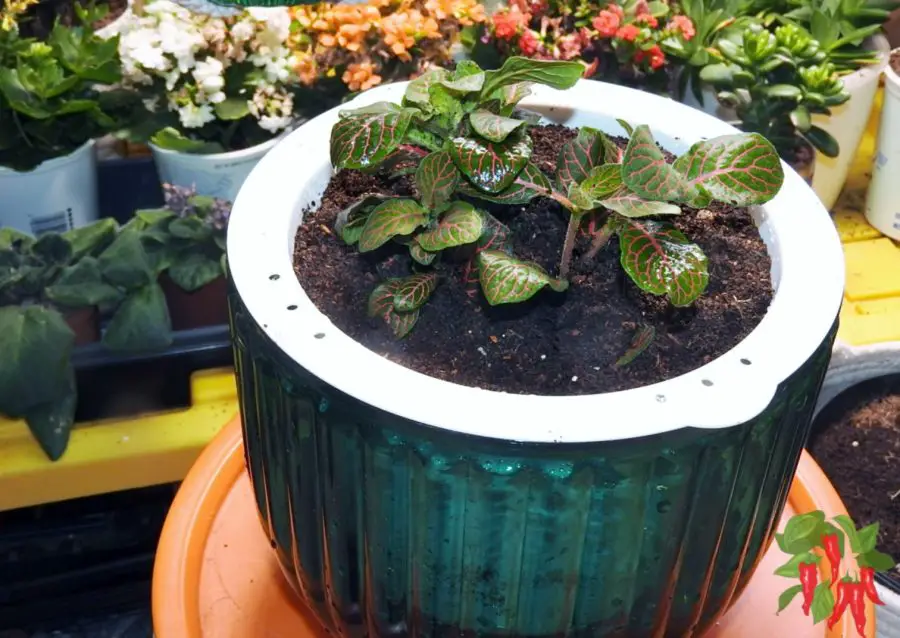
If you’re tired of guessing when to water—or dealing with the dramatic wilt—self-watering planters can be a game-changer for Fittonia care. These pots help keep the moisture level just right without drowning the roots.
🌟 Benefits of Self-Watering Pots for Fittonia
- Consistent moisture – Keeps soil evenly moist without the risk of sogginess
- Prevents wilting – Reduces the chance of dry spells that cause sudden drooping
- Less stress – Great if you’re busy or tend to forget watering
- Healthier roots – Water is absorbed from below, encouraging strong root growth
This setup mimics the plant’s natural environment and takes the pressure off daily watering. It’s one of the easiest ways to keep your Red Fittonia looking its best with less fuss.
💧 Keep Your Fittonia Happy with the Melphoe 8.3″ Self-Watering Planter
Tired of guessing when to water? The Melphoe 8.3-inch Self-Watering Planter takes out the guesswork and keeps your Red Fittonia perfectly hydrated.
It’s stylish, and functional, and makes plant care a breeze—especially for moisture-loving plants.
 Melphoe Self Watering Hanging Planters for Indoor Plants, 1 Pack 8.3 Inch Outdoor Hanging Plant Pot Basket, 2 Kinds of Hangers Macrame 35.5’’ & Metal Chain 19.6’’ for Garden Home Decor
Melphoe Self Watering Hanging Planters for Indoor Plants, 1 Pack 8.3 Inch Outdoor Hanging Plant Pot Basket, 2 Kinds of Hangers Macrame 35.5’’ & Metal Chain 19.6’’ for Garden Home Decor
Click here to grab yours on Amazon and give your plant the upgrade it deserves!
🪴 Soil and Potting Tips
Fittonia needs a soil mix that holds moisture but still drains well—kind of like a sponge that doesn’t stay soggy. The right potting mix helps prevent root rot and supports steady, healthy growth.
🌱 Best Soil Mix for Fittonia
- Use a rich, well-draining mix
- Ideal blend: coco coir, perlite, and a bit of orchid bark
- Aim for a slightly acidic to neutral pH (around 6.0–7.0)
- Always use pots with drainage holes to avoid standing water
🌍 Why Coco Coir Is a Better Choice Than Peat
- Sustainable – Coco coir is made from coconut husks, a renewable resource
- Improved drainage – It’s fluffy and fibrous, so it allows air to reach the roots
- Better rehydration – Coco coir re-wets more easily than peat when it dries out
- Long-lasting – It holds up longer in pots without breaking down as quickly
Coco coir gives your Fittonia a soft, breathable base that doesn’t compact just like the forest floor it calls home.
💦 Watering and Fertilizing
Fittonia can be a bit dramatic about water—but once you learn its rhythm, it’s smooth sailing.
The key is keeping the soil moist without overdoing it, and giving it just a little boost during the growing season.
That’s why Fittonia is a great candidate for a self-watering planter.
💧 Watering Tips
- Water when the top inch of soil feels dry to the touch
- Make sure the pot drains well—never let it sit in standing water
- If it wilts, don’t panic! A drink of water usually perks it right back up within hours
🌿 Fertilizing Schedule
- Feed once a month in spring and summer with a diluted liquid fertilizer
- Use a balanced, all-purpose houseplant formula at half strength
- No need to fertilize during fall and winter when the plant naturally slows down
Keeping your Red Fittonia on a simple routine keeps it looking bold, bright, and ready to grow.
✂️ Pruning and Maintenance
Fittonia isn’t high-maintenance, but a little grooming goes a long way. With regular pinching and the occasional trim, you can keep your plant full, fresh, and looking its best.
🌱 Easy Pruning Tips
- Pinch back stems regularly to encourage bushy, compact growth
- Trim off leggy or faded leaves to keep the plant tidy and healthy
- If your Fittonia starts to flower, snip off the blooms—they’re not showy, and removing them helps the plant focus on lush foliage
🪴 When to Repot
- Every 1–2 years, or when roots are peeking out of the drainage holes
- Choose a pot that’s one size up with fresh, breathable soil
- Repotting gives the roots room to grow and keeps the plant from getting stressed
A little upkeep keeps your Red Fittonia thriving and vibrant, all year long.
🚨 Common Problems and Fixes
Even with great care, your Fittonia might throw a little fit now and then. Luckily, most issues are easy to spot—and fix—once you know what to look for.
🥀 Drooping or Wilting
- This is your Fittonia’s dramatic way of saying it’s too dry or the air’s too dry
- Solution: Water it and bump up the humidity—it should perk back up within hours
🍂 Leaf Curl or Browning Edges
- Usually caused by too much direct sun or not enough moisture
- Move it to indirect light and check the humidity and soil moisture
💛 Yellowing Leaves
- Often a sign of overwatering or poor drainage
- Let the soil dry out slightly and make sure your pot has good drainage
🐛 Pests to Watch For
- Keep an eye out for aphids, mealybugs, or spider mites
- If you spot any, rinse the leaves and treat with insecticidal soap or neem oil
With quick action and a little care, your Red Fittonia will bounce back in no time.
Red Fittonia Nerve Plant Plant Care Reference Guide
| Characteristic | Details |
|---|---|
| Common Name | Red Fittonia, Red Nerve Plant, Mosaic Plant |
| Botanical Name | Fittonia albivenis (Verschaffeltii Group) |
| Native Habitat | Tropical rainforests of Peru, Colombia, and Brazil |
| Plant Type | Evergreen herbaceous perennial |
| Growth Pattern | Low-growing, spreading, bushy |
| Mature Size | 3–6 inches tall, 12–18 inches wide |
| Watering | Keep soil evenly moist; do not let dry out completely |
| Light/Sun Exposure | Bright, indirect light; tolerates low light |
| Soil Type | Well-draining mix with coco coir, perlite, and bark |
| Soil pH | Slightly acidic to neutral (6.0–7.0) |
| Temperature | 60°F–85°F; avoid cold drafts |
| Humidity | Prefers 50% or higher; ideal for terrariums |
| Bloom Time & Flower Color | Occasional small white or pink spikes; often removed |
| Potential Problems | Wilting, browning, yellowing, pests (aphids, mites) |
| Repotting | Every 1–2 years or when rootbound |
| Hardiness Zones (USDA) | 10–11 (grown indoors elsewhere) |
🌸 Display and Styling Ideas
Red Fittonia isn’t just pretty—it’s super versatile when it comes to styling your space. Whether you’re going for a bold pop of color or a cozy jungle vibe, this plant fits right in.
🏡 Creative Ways to Show It Off
- Terrariums – Fittonia loves humidity and looks stunning behind glass
- Small pots – Perfect for desks, windowsills, or side tables
- Larger arrangements – Use it as a colorful underplant beneath taller greenery
🌿 Styling Tips
- Pair it with other humidity-loving plants like ferns or Calatheas
- Add to bathrooms or kitchens, where steam keeps moisture levels high
- Use it to brighten up shelves or low-light corners that need a little life
Its vibrant red veins bring energy and warmth to any room—no green thumb required.
🌺 Conclusion: Red Fittonia Nerve Plant – Bring Home a Bold Beauty
If you’re looking for a plant that adds instant color and charm to your space, the Red Fittonia is a standout choice.
It’s compact, colorful, and full of personality—perfect for terrariums, small pots, or any spot that could use a little life.
🌿 Quick Recap:
- Loves bright, indirect light
- Needs consistent moisture and high humidity
- Thrives in coco coir-based soil with good drainage
- Enjoys a monthly feeding during the growing season
- Benefits from regular pruning and repotting every 1–2 years
With a little attention to humidity and watering, this tropical stunner rewards you with vibrant, lush foliage all year long.
Give the Red Fittonia a try—you might just fall in love with its bold charm and dramatic flair.
Indoor Apartment Gardening: 15 Point Comprehensive Guide
🌟 Ready to Grow Your Own Red Fittonia Nerve Plant?
Add a splash of color and life to your home with this vibrant, humidity-loving plant. Whether you’re building a terrarium, adding a hanging basket, or brightening up a shelf, the Red Fittonia is the perfect pick.
 BubbleBlooms Red Fittonia Albivenis Nerve Plant in a 4 inch Pot, Mosaic Jewel Creeping Indoor Plant verschaffeltii
BubbleBlooms Red Fittonia Albivenis Nerve Plant in a 4 inch Pot, Mosaic Jewel Creeping Indoor Plant verschaffeltii
Grab one today on Amazon and start your tropical plant journey—one colorful leaf at a time!
FAQ: Red Fittonia Nerve Plant Care
Got questions about keeping your Red Fittonia happy and thriving? You’re not alone. This dramatic little houseplant is a stunner, but it does come with a few quirks. Here are some common questions and down-to-earth answers to help you grow with confidence.
Q. Why is my Red Fittonia wilting so often?
A. Fittonias wilt fast when they’re thirsty—but don’t panic. A good drink of water usually perks them right back up. Just don’t let them dry out completely too often, or the stress can cause long-term damage.
Q. How much light does a Red Fittonia need?
A. Bright, indirect light is ideal. It can handle lower light but won’t grow as vigorously. Keep it out of direct sun—those delicate red veins can scorch easily.
Q. What’s the best way to increase humidity for my nerve plant?
A. A small humidifier, a pebble tray with water, or grouping it with other plants can help. It also loves life in a closed terrarium where moisture stays trapped.
Q. Can I grow Red Fittonia in a bathroom?
A. Absolutely. As long as the bathroom has a window or some grow light, the humidity makes it a perfect spot.
Q. Do I need to fertilize my Red Fittonia?
A. Yes, but lightly. Use a balanced liquid fertilizer at half-strength once a month during the growing season (spring and summer). Skip the feedings in winter.
Q. Why are the leaves on my Fittonia turning yellow?
A. Yellow leaves usually point to overwatering. Make sure your pot has drainage and that the soil isn’t staying soggy for too long.
Q. Is Red Fittonia safe for pets?
A. Yes! Fittonia is non-toxic to cats and dogs, making it a great pick for pet-friendly homes.
Q. How often should I repot it?
A. Every 1–2 years, or when you see roots poking out of the drainage holes. Choose a pot just one size up and refresh the soil while you’re at it.
Visit my Amazon Influencer Page for videos and gardening products Grow Your Own Garden

